Disclosure: Meeple Mountain received a free copy of this product in exchange for an honest, unbiased review. This review is not intended to be an endorsement.
Ever since I was a young boy
Growing up I was more than a little envious of the friends who had genuine, honest-to-goodness pinball machines in their homes. As my childhood embarked in an age dominated by analog entertainment, there was a time when I knew more people with arcade-style pinball machines than Nintendos.
Eventually, the analog world gave way to the 8-bit, and then the 16-bit world and so on. Still, when I entered those pinball homes, I couldn’t help but take up the flippers and see what I could accomplish with a ball or three before we glued our eyes to Mario and his friends. Though for a time I enjoyed NES Pinball, no pseudo-machine could rival the thrill of the original.
When I first heard about Super-Skill Pinball, I was skeptical of the possibility that a tabletop experience could mimic the excitement of a real pinball machine. Vintage gaming tables don’t always translate well into the realm of board games. The first installment in the Super-Skill series—4-Cade—turned enough heads that I was still hopeful as I sat down to engage with this year’s sequel: Ramp It Up!
I’ve played the silver ball
Super-Skill Pinball: Ramp It Up! includes 4 distinct dry-erase machines, each consisting of a vertically laid playfield with a horizontal bonus area laid above. The pinballs are actually only pinball hemispheres, but they look great sliding around the player board. There’s no mistaking the fact that on the dining room table, this looks something like a pinball machine.
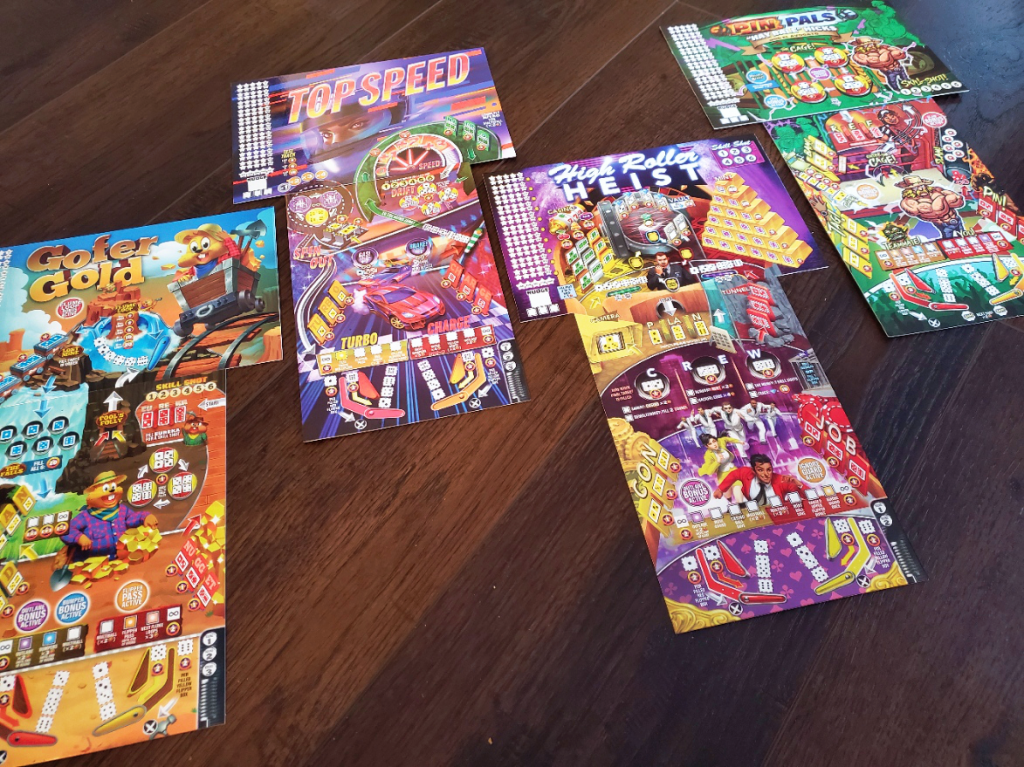
The ball enters from the top right and begins its first descent through the machine with a roll of the dice. Movement works like you would expect—gravity pulls the ball downward unless a flipper or a bumper changes the trajectory. The machine is divided into zones, and the ball must descend at least one zone with each turn, scoring points along the way.
Each zone typically contains two features, colored red and yellow and labeled with several possible die faces. If one of the rolled dice matches one of the available features, players may mark that feature and wait for the next turn. If no features are available, the ball continues to fall until it finds a match. If no match is found, the ball just might fail, ending the round.
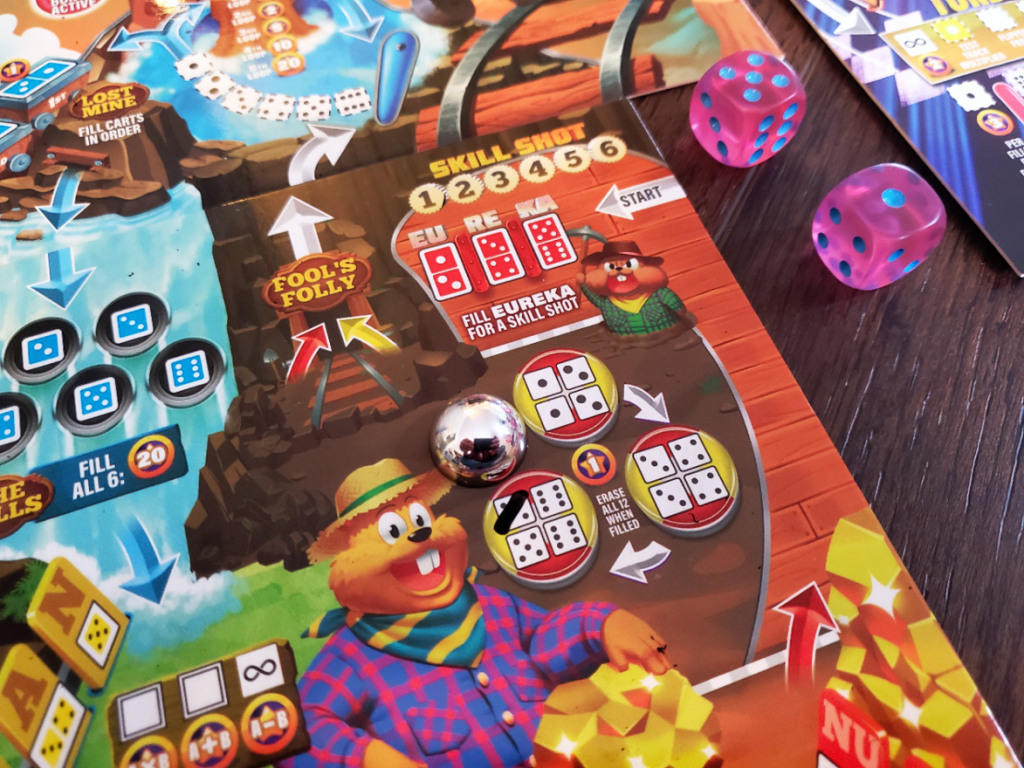
If the die roll lands the ball on a flipper, the next roll will then send the ball upward in search of a feature matching the color of the flipper and the face of the die. Players may choose to send the ball as high as best benefits their score.
Certain features will score immediate points. Others will accumulate for larger bonuses later. Some clear out to be scored over and over, while others are only available once in the entire game. Each pinball machine comes with a collection of unique features and mechanisms that offer a wealth of scoring opportunities. The bonus features on the top portion of the board typically represent the excitement most fully steeped in the machine’s theme.
One of my favorite pinball-esque delights of the game is the multi-ball bonus. Certain zones contain features that accumulate rolls to release a second ball into the works. Players in the multi-ball bonus receive the euphoria of double points for the duration of the bonus. The catch is that each ball must claim one of the two dice, introducing a new challenge. Keeping multiple balls active is highly lucrative, but tends to eat up the use of the flippers. If timed properly, this bonus is a bundle of excitement.

Allow me a moment to speak about the Nudge. When a die roll doesn’t cooperate, players are able to Nudge the machine, changing the die to any number of their choosing and arousing any number of childhood memories of shaking the screws out of an inanimate table. They simply write the difference in the Nudge box and celebrate their good fortune. There is poison in the next roll, however, because if the difference between the next two dice is less than the Nudge value, the machine Tilts and the round is lost. Three of these calculated Nudges are available in the whole game.
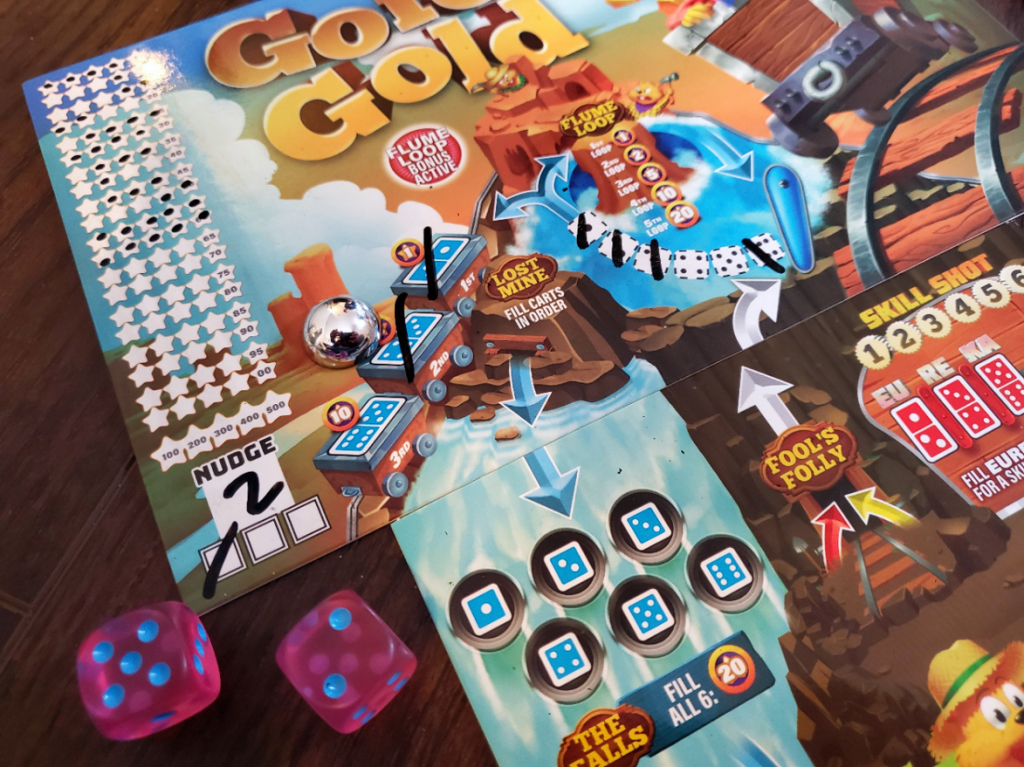
Scores are tabulated every turn, stretching into many hundreds by the game’s end. When the third and final round reaches its sunset, the totals are compared and a pinball wizard is crowned.
From Soho down to Brighton
There’s a lot to love about Super-Skill Pinball. Geoff Engelstein (The Expanse) and the team at WizKids have built a fun franchise here, one I trust will continue to grow. The artwork from Gong Studios (Tiny Towns, Drop Drive) fits the pinball aesthetic beautifully. The semi-pinball component is a treat, and the dry-erase markers were some of the least frustrating I’ve used yet.
The flippers and bumpers scale well to any number of players. As every machine shares the same two dice, the count is technically unlimited, provided there are enough game copies handy for folks to occupy a machine. Players need not necessarily even play the same setup, mimicking the true arcade experience. Only the obsessive focused play and the final score matter. In this regard, Super-Skill Pinball is essentially a solitaire experience in which various pitches of excitement occasionally align to form a blast of harmony.
The obvious knock against these machines comes from the clock. The box listing of twenty minutes is horribly inaccurate for anything but a solo session. At four players, the games regularly push towards an hour. As decisions are made and multi-ball bonuses roll in and out, players are not always operating at the same pace, leading to snippets of down time that add up to quarters of an hour. This is hardly a deal-breaker, and hardly uncommon in the roll-and-write genre, but it’s worth knowing in advance.

I must have played them all
Nothing matches the sensory experience of pinball. The older the machine, the more exhilarating the play: literal bells and whistles, buttons, lights and vibrations, theme songs and some manner of ticking scoreboard. Cherished memories of those old machines live on in arcades and the basements of several childhood haunts; memories that cannot be matched by a roll-and-write game. I haven’t played a genuine machine in years, but this little mock machine stirred those memories, and in doing so stirred in me a gratitude for the ride. Super-Skill cannot replace or match pinball, but it serves up a cathartic joy by its imitation.
Pinball is a one vs. the machine game, no matter how many are in the arcade. Something would be off if an attempt were made to create some highly interactive experience. So it is with the highest regard that I say: as a shared solitaire game, I’ve liked my plays through Super-Skill Pinball. The system is fairly intuitive and becomes second nature after the first ball. When the thrills and bonuses line up for several players at once, each roll can feel like a low-stakes craps table. But the core joy is still in staring down your own machine and engaging the precision battle against gravity.
Even if just for the sake of nostalgia, I’m glad this one is out there. I have a feeling I’m not the only one.
One year later…
Two more iterations of Super-Skill Pinball have come to retail since this collection, one featuring Star Trek and another collection featuring classic holiday films. In a way, this particular roll-and-write game is the perfect low-investment medium to revisit favorite intellectual properties, even if just for a brief season. Pinball itself excites an emotional attraction (it certainly did for me!) to match the draw of the images adorning the various boards. This magnetic quality, however, has limits. I have since traded away my copy, but I wouldn’t say it was for a lack of value. In fact, I would argue the enjoyment of Super-Skill Pinball is beyond reasonable for the purchase price. It might be the sort of game that holds you longer than it did me, but I got enough plays out of it to consider the game’s purchase price worthwhile.



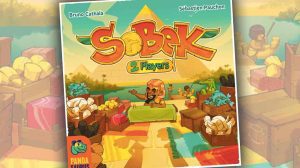


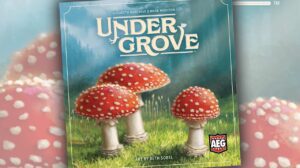




Add Comment